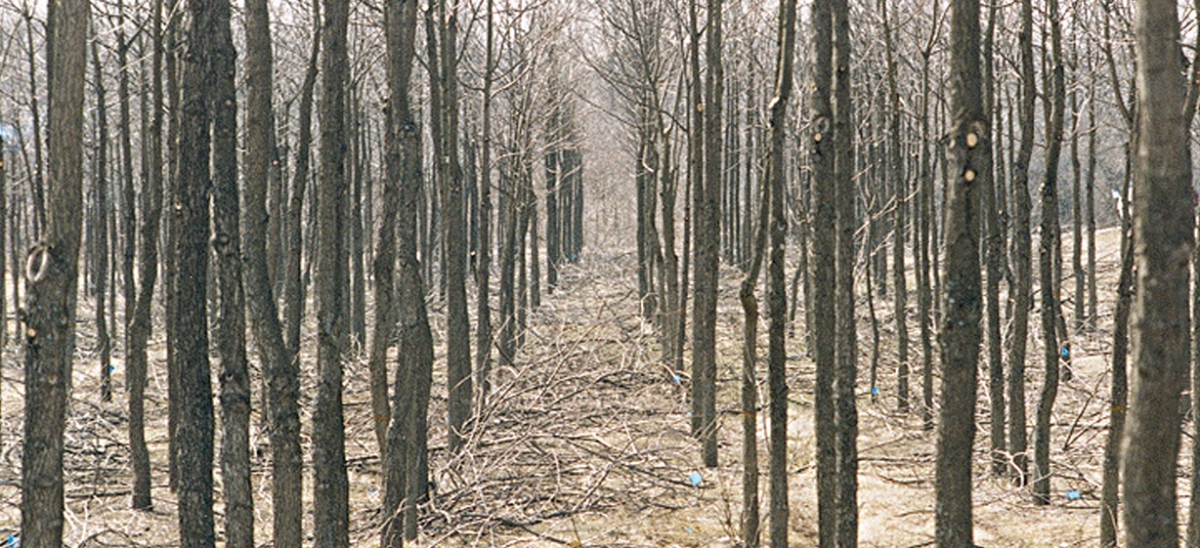Trees and Time

There is nothing quite like working among trees in the dead of winter.
We walk, my sons and I, through the dense forest of white pine. The only sounds are the muted swoosh of the wind and the occasional snap of a twig underfoot on the soft, pine- needle floor.
The boys are home for the holidays, and we’re walking through trees my father planted a few years before they were born. The pines serve as a gateway to our destination, down the hill and along the banks of the frozen stream where black walnut trees spread over 40 acres.
The dog runs ahead, sniffing the ground and disappearing in the distance. We each carry a chainsaw and one other item—the gas, the oil, and the plastic bag with our sandwiches and water.
Reaching the walnuts, we crouch above the frozen ground, fill our saws with oil and gas, and put on our hats, gloves, glasses, and earplugs. One by one, we yank the pull cords, and the whine of the chainsaws fills the air. For most of the next seven hours, we communicate in shouts.
We’re at the farm to tend the black walnut trees. Some 5,000 remain of the 10,000 planted in 1988. Drought and Nature’s other agents claimed many. And we’ve cut down many others to strengthen those that remain. The ultimate goal is trees which can be used for highly prized furniture veneer. But that’s a tall order. A veneer-quality tree must have a straight trunk and no branches on the first 12–16 feet. And it must grow for 60 years.
My father planted the trees several years before his stroke. In his last visits, he lay on the back of the wagon, painting stakes with his good arm to mark the young saplings. He recited a favorite line from Cicero through the side of his mouth not affected by the stroke: “The farmer is prophetic who plants his crop knowing he won’t see its fruition.”
As investments go, stocks promise faster returns, and bonds more security. We put in the time and labor, but there’s no guarantee the trees will live to maturity. Nature’s threats always loom, including a walnut-killing disease that’s been detected several counties over. I hope the trees will survive, but I won’t be around for the harvest either. Like so many other things, it’s an act of faith.
On this snowy day, we cut off the lower branches of the promising trees, careful not to cut into the branch collar. And we cut down all competitors for sun and water—misshapen walnuts, woody shrubs, prolific cedars and the occasional, dreaded honey locust with its three-inch spikes.
The work has an endless aspect, but we’ve long since moved beyond being daunted by its scope. We work, rest when we’re tired, and curse when a tree binds and the chain comes off the saw.
This is winter work. Frost has flattened the thick brush. The bugs are gone. And the dormant walnut trees don’t bleed sap when we trim them. Finally, the cold air counteracts our fatigue.
My sons are 21 and 25 and take fewer breaks than I. When I’m out of breath and my heart is pounding, I simply lie back on the ground and rest, looking up through the branches at the high, gray sky and the swirling snowflakes falling everywhere.


